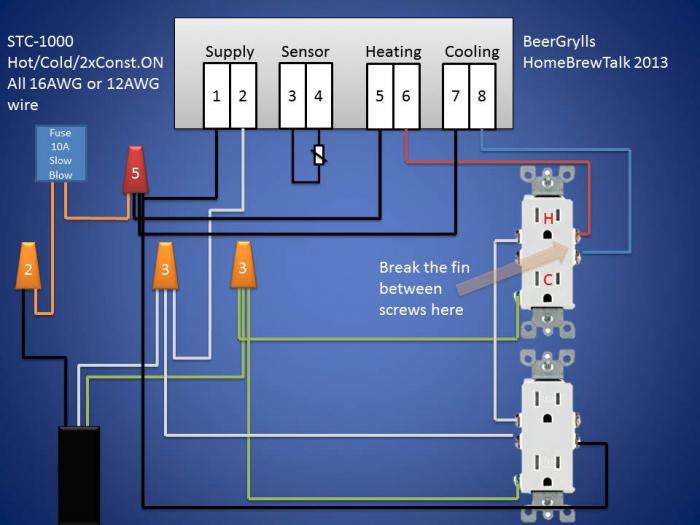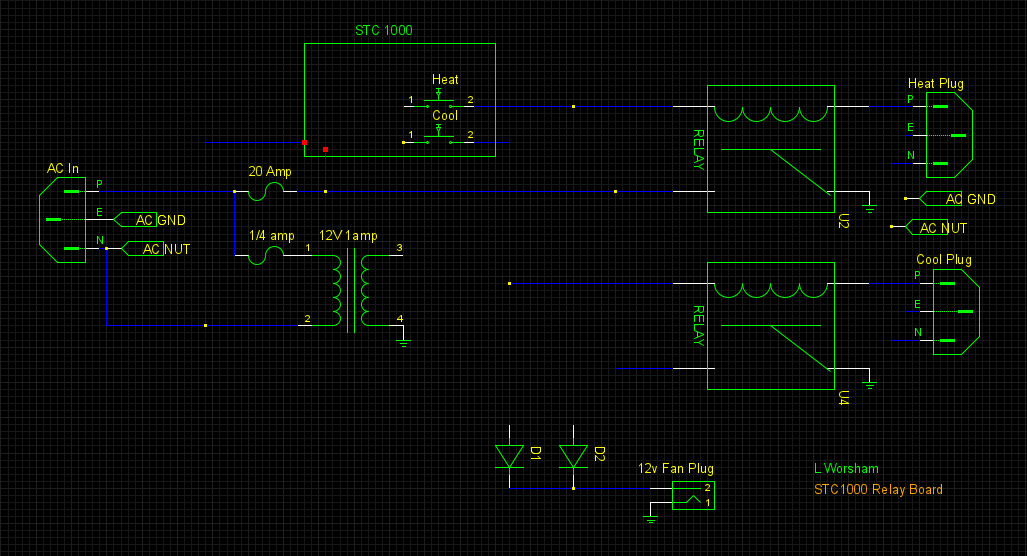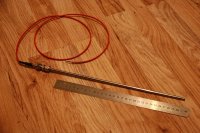JuanMoore
Getting the banned back together
I would think you would have the opposite problem of an overshoot when using a chest freezer and taping the probe to the outside.
This can happen if you don't insulate the probe or secure it to the fermenter well enough. With the probe uninsulated, the controller can cut off the heat/cool way before the wort is at the set point, so even with the carryover it doesn't quite get to the set point, and after temps reach equilibrium it has to turn on again. With the probe insulated the controller generally cuts the heat/cool off just before it reaches the set temp, but there's still some carryover, which then usually takes the temp very close to the set point.
There's always going to be carryover when changing temps, and the amount depends on the initial temp differential, and the thermal mass and specific heat of the system components. The most elegant solution for this is using fuzzy logic or PID type controllers. With a simple on/off type controller, different sensor placements can help neutralize some of the temp lagging.
But It makes sense to me that the the starting temperature of your wort and type of chamber you're using would have more to do with over (or under) shooting your temp than whether you're using a thermowell or taping your probe on the outside
As I've already mentioned, the overshoot is only noticeable when the wort temp is different from the set temp of the controller, and the greater the difference the greater the overshoot will be. If you cool to your ferm temp (or very close to it) before placing it in your ferm chamber, and never ramp temps up towards the end of fermentation, or cold crash in your ferm chamber, you'll likely never notice it. If you need to change temp more than a couple degrees for any reason, you'll likely notice it.
And it's not exactly the type of ferm chamber you're using, like fridge vs chest freezer vs upright freezer. It's the thermal mass and specific heat of the fermenter, ferm chamber interior walls, and shelving/contents (other than the fermenter full of wort).
There's probably slightly more overshoot when the cooling system transfers a lot of heat really quickly, but there's not a significant difference in this regard between a chest freezer and a fridge. There is however a huge variety of heat sources I've seen people using in their ferm chambers. Someone using a 1500W space heater is going to have more overshoot problems than someone using a 40W light bulb in a can.











